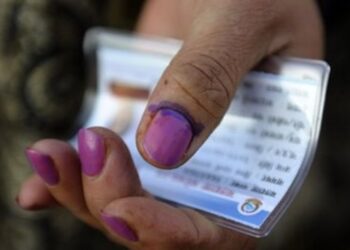As one of the most disaster prone countries in the world, Bangladesh has demonstrated their remarkable resilient capacities as a global champion in Disaster Management.
In an effort to professionalize Comprehensive Disaster Management Approach with particular focus on integration of DRR into development process, Bangladesh developed a National Plan for Disaster Management (NPDM) 2007-2015 as well as Disaster Management Act are outcome of the national and international commitments of the Government of Bangladesh (GoB) and the Ministry of Food and Disaster Management and Relief (MoFDMR) for addressing the disaster risks comprehensively.
Besides, the Standing Orders on Disaster (SOD) have been revised over the years with the avowed objective of making the concerned persons understand and perform their duties and responsibilities regarding disaster management at all levels.
Mainstreaming of disaster risk reduction (DRR) is a governance process enabling the systematic integration of DRR concerns into all relevant development spheres.
Individual DRR actions and programs need to be located within this strategy, rather than treated as discrete, individual measures.
In other words, responsive, accountable, transparent and efficient governance structures underwrite the environment where DRR can be institutionalized as an underlying principle of sustainable development in the disaster prone Bangladesh.
Therefore, building resilient communities in disaster-prone countries requires that: a) underlying risk factors are continuously considered in all relevant sectors; and b) risk reduction standards and measures are an integral part of the planning and delivery of core development services and processes, including education, environment, and health.
A comprehensive disaster risk management strategy, actively involving stakeholders at all levels of government as well as the private sector, local communities and civil society, is required to implement the legislative framework and to provide coordination and monitoring mechanisms and arrangements.
Reform is greatly facilitated by a well-placed and respected policy champion with technical knowledge, skill, commitment and creative initiative. Ideally policy champions should have high political or administrative office, and have an understanding of, and be able to work through, both formal and informal kinds of institution.
Individual DRR actions and programs need to be located within this strategy, rather than treated as discrete, individual measures.
Moreover, the strategy needs to indicate specific entry points and mechanisms for mainstreaming DRR concerns into both the broader development agenda and the design and implementation of individual development initiatives.
The most important problem in land use planning for DRR is the determination of the appropriate criteria. For the determination of a range for the relevant criteria, identification of all effective criteria such as social, cultural, geographical, political and economic criteria are necessary.
Lack of attention to any of these criteria may lead to the failure of the planning. The effective factors in making the land use plan strategic include the executive regulations determining the physical shape and the quality of urban environment and Intervening strategies in urban fabrics.
Land use planning is potentially powerful mitigation tool as it seeks to mitigate the risks and vulnerability from several geological and other hazards.
For efficient land use planning considering DRR, formulation of “National Land Use Policy” is necessary. The objectives of land use policy are governed by what people want or think they should have, and what the functions of government are conceived to be in bringing about better use of land including water bodies.
Changes in land use and water bodies are desired only when people are dissatisfied with existing conditions or when people conceive of better use of land and water bodies.
Non-structural measures should be enhanced more for disaster risk management. More shelters should be built in cyclone prone areas.
Education and counseling services should be provided through seminars, consultations and public discussions. Regional co-operation should be sought for international river basin development.
Disaster prone regions should be brought under easy communication network and effective surveillance system. Warning system should be adequately planned and timely done with the assistance of ICT.
Appropriate forecasting and preparedness program should be developed so that concerned agencies earmarked for the disaster management can be deployed quickly.
The implementation of national risk reduction legislation takes place at the local level, so it is important that local government is given budgetary support and human skills as well as responsibility for risk reduction.
Joint exercise between civil and Armed Forces should be arranged in order to have more coordinated effort. We have good precedence in the regard as Armed Forces were called in past in aid of civil administration to undertake joint and massive operations for search and rescue and relief operations in case of massive disaster event.
In Bangladesh’s experience, when political direction and support fell away, momentum for reform slowed, stakeholder buy-in diminished and those involved became dispirited.
Reform is greatly facilitated by a well-placed and respected policy champion with technical knowledge, skill, commitment and creative initiative. Ideally policy champions should have high political or administrative office, and have an understanding of, and be able to work through, both formal and informal kinds of institution.
The body driving the legislation should be located at the highest level of executive authority in order to drive cross-sectoral integration.
As far as possible, legislation should fit into existing government planning cycles and procedures for implementation and monitoring.
Pre-existing sectoral policies and activities relevant to DRR must be taken into account in any reform agenda. This avoids DRR legislation and its implementation being perceived as costly and reduces the likelihood of competition over resources.
Well-established national platforms can play a key role in enforcing DRR legislation, liaising with line ministries and other actors in shaping risk reduction policies.
Regional institutions can support national-level legislation and its implementation. Hence, aligning DRR legislation with international best practice has essence.
The systematic incorporation of risk reduction approaches into the design and implementation of emergency preparedness, response and recovery programmes in the reconstruction of affected communities.
Those centrally involved in the reform process should be linked to DRR constituencies – such as national professional associations and disaster risk management associated teaching and learning institutions.
DRR legislation must explicitly state required outcomes at community-level, and result in reform at the lowest administrative level along with investment of financial resources in local-level activities.
The implementation of national risk reduction legislation takes place at the local level, so it is important that local government is given budgetary support and human skills as well as responsibility for risk reduction.
Multi-level Governance in case of DRR for Bangladesh is pragmatic. DRR is every one business and collaboration between public sector and private sector could trigger the expansion of DRR programme.
As we know, Multilevel Governance is perceived as new addition to the approaches of governance. It seems like integration of different forms of government within a region or cooperation among different stakeholders within a country with a vision for common goal to attain with meaningful participation of the actors/nations agreed upon officially.
Multilevel governance provides a starting point for understanding how central governments and other public and private actors interface to design and implement policies from international to national and local levels of action.
Regardless of the constitutional form of government, multilevel governance calls for a narrowing or closing of the policy “gaps” among levels of government via the adoption of tools for vertical and horizontal cooperation.
Develop a culture and establish a systematic approach to capture communities’ practices for DRR for replicating/scaling up across the country and ensuring disaster management services to international standard.
A key determinant of the effectiveness of DRR legislation of Bangladesh will be the extent to which it results in good practice and change at the local level.
The systematic incorporation of risk reduction approaches into the design and implementation of emergency preparedness, response and recovery programmes in the reconstruction of affected communities.
Policy framework of Bangladesh has demonstrated a new approach within DRR that enables communities to establish potential solutions to their vulnerability to environmental hazards.
While the framework has been developed in consultation with relevant stakeholders, its conceptual form does not adequately demonstrate the usefulness or the potential solutions to promote DRR as a whole.
The first step towards implementation of the DRR programme is recognition by associated stakeholders that enforcement of relevant policies round the year time is a crucial.
Without enforcement, policy framework is a meaningless exercise that will result in top down solution imposing float up solutions.
The implementation of policy framework and development of an integrated strategy within a community can only occur through a dialogue based on respect and communication between associated stakeholders and the community.
A relationship based on trust and communication is conducive to the implementation of policy framework and to the subsequent initiation of the participatory process enabling communities to identify the benefits of DRR program, and how they may be integrated to reduce vulnerability.
The policy framework facilitates a process whereby successful integration of the two knowledge bases may occur at the community level.
The diversity of challenges and opportunities at the national level for building and implementing DRR legislation that will reach the most vulnerable is matched by the urgency with which DRR legislation is required.
The process is neither top down nor bottom up but rather a collaborative effort within and between the community and associated stakeholders.
Effective capacity development, advocacy and programming require thorough analysis pertaining to the disaster risk management financing analysis, covering public sector spending for DRR, relief and response; and assessment for identifying key gaps in DRR capacity, which provides the basis for incorporating relevant DRR activities into budgeted projects of development plans at the appropriate level. DRR advocacy, awareness and education Public awareness and advocacy activities are central to get benefit out of such policy framework adopted by the Government of Bangladesh.
If DRR legislation is to bring about change in behaviour among the most vulnerable, it must explicitly state required outcomes at community level, and result in reform at the lowest administrative level, along with investment of financial resources in local-level activities.
A key determinant of the effectiveness of DRR legislation of Bangladesh will be the extent to which it results in good practice and change at the local level.
The diversity of challenges and opportunities at the national level for building and implementing DRR legislation that will reach the most vulnerable is matched by the urgency with which DRR legislation is required.
It is widely acknowledged that well-placed, high-level political commitment with relevant expertise and knowledge can play a major role in building commitment to DRR and it’s mainstreaming into broader development in Bangladesh.
(Dr. Mohammad Tarikul Islam is an Associate Professor, Department of Government and Politics, Jahangirnagar University, Bangladesh)









Comment